The Apple Thunderbolt Display Review
by Anand Lal Shimpi on September 23, 2011 2:56 AM EST- Posted in
- Displays
- Mac
- Apple
- Thunderbolt
- Thunderbolt Display
Ever since I moved to a notebook as my main work computer I've become increasingly annoyed with the process of actually moving my notebook-as-a-desktop around. At my desk I've got DisplayPort, Ethernet, two USB, FireWire 800, speakers and power all plugged into a 15-inch MacBook Pro. What makes it frustrating isn't the first-world-problem of having to unplug seven cables, rather that it doesn't need to be seven cables - Apple could make the whole thing happen with just two.
Every Mac released in 2011 has at least one Thunderbolt port (the iMac has two), and Thunderbolt can deliver exactly what I'm looking for. Thunderbolt can carry two things: PCI Express and DisplayPort, the former for data and the latter obviously for video. Why would you want to carry PCIe and DP over a single cable? To address problems like the one above.
Pretty much all device expansion on modern day PCs happens via PCI Express. Several years ago it was hard to find PCIe sound cards or Ethernet controllers, but these days vanilla PCI slots are nearing extinction and PCIe is the de facto standard. Ethernet, USB and FireWire controllers all exist as single-lane PCIe devices. Put a bunch of them at the other end of a Thunderbolt cable and you no longer need to plug in a bunch of individual cables into your notebook when at your desk. Send DisplayPort over the same cable and you can actually move all of those ports onto your monitor, thereby using a single cable to carry everything but power to your display. And this is exactly what Apple has done with its new Thunderbolt Display. By mating its 27-inch LED Cinema Display with a bunch of integrated IO controllers, Apple is hoping to deliver a display that's more of a mobile docking station than just a passive way to display video.
Apple has tried this in the past. The old Cinema Displays used to feature an Apple Display Connector (ADC) that actually carried DVI, USB and power from a desktop Mac to the monitor. You only needed to plug in a single cable to your display, significantly reducing desktop clutter. Although Thunderbolt does carry power, it's limited to 10W - not enough to power any reasonably sized display. Where Thunderbolt does win out over ADC however is in its universal appeal. Intel created the standard. Although it's used almost exclusively on Apple systems today, come 2012 Intel is expecting PC OEMs to embrace the interface with its Cactus Ridge line of Thunderbolt controllers.

Apple's Thunderbolt Display
The Thunderbolt Display uses a near, if not perfectly, identical panel to what was in last year's 27-inch LED Cinema Display. You get a 27-inch, 16:9, 2560 x 1440 LED backlit display capable of at least 350 nits at full brightness. Apple seems to conservatively spec its desktop displays as we were able to measure 425 nits at max brightness. The uber brightness comes in handy because the display does have a glossy finish. Indoors it's not really a problem unless you're watching a dark movie scene with the display lit by a sun-facing window. Even then, cranking up the brightness all the way is usually enough to overcome any significant glare. As with all glossy displays, if you have light control (e.g. curtains or blinds) you'll be just fine.
The similarities don't end with the internal panel, the chassis is very similar to its older sibling and the Thunderbolt Display retails for the same $999 price.
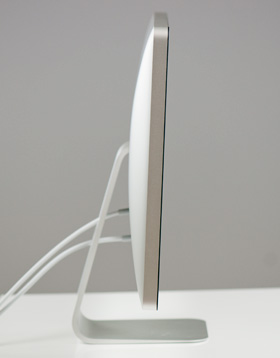 |
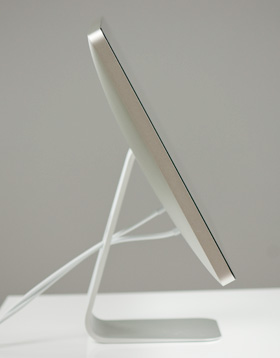 |
The display sits on an aluminum swivel base that allows for -5 degrees to 25 degrees of tilt along the horizontal axis. There's no height adjustment for the display either, only tilt. Personally, I use a height adjustable desk as I find it helps me avoid any carpal tunnel pain. Combined with a height adjustable chair, the lack of height adjustment on the display doesn't bother me. If you have a fixed height desk however, this may be a problem.
Aesthetically the Thunderbolt Display continues Apple's aluminum meets glass design language. The front of the display is all glass, while the edges and back are all aluminum. Along the top surface of the display is a mic for the integrated FaceTime HD camera. The outgoing 27-inch LED Cinema Display (still available for purchase online) sported a 640 x 480 camera, while the Thunderbolt Display ups capture resolution to 1280 x 720.
There's an ambient light sensor hidden in the top bezel of the display, but as always you can disable its functionality from within OS X.

There are two integrated speakers in the display, again unchanged from the previous LED Cinema Display.
Two cables attach directly to the display: a removable power cable and an integrated IO cable. Cable management is done through a round cutout in the aluminum stand. The IO cable is where things really change with the Thunderbolt Display. Instead of a breakout of three cables as was the case with the Cinema Display, there are now only two: MagSafe and Thunderbolt.
The MagSafe connector remains unchanged. If you've got any Mac that can be charged by an 85W MagSafe adapter, the Thunderbolt Display will charge said Mac. This feature alone is particularly awesome for notebook-as-a-desktop users since it allows you to just keep your actual AC adapter tucked away in your travel bag. For me I keep my MagSafe adapter in my bag and never take it out so I never have to worry about forgetting to pack it. Given how expensive MagSafe adapters are ($79 for an 85W), this is a nice feature for MacBook Air/Pro owners.
The Thunderbolt cable is obviously what gives this new display its name. Inside the Thunderbolt Display is an Intel Light Ridge Thunderbolt controller. The type of controller is important as it bestows upon the display some clear limitations. The biggest of course is the lack of support for all non-Thunderbolt systems. That's right, the only way to get video to the Thunderbolt Display is by using a Thunderbolt enabled Mac (or theoretically a Thunderbolt enabled PC). For Mac users that means only 2011 MacBook Pro, Air, iMac or Mac mini models will work with the Thunderbolt Display. Everyone else has to either buy a new Mac or stick with older displays.
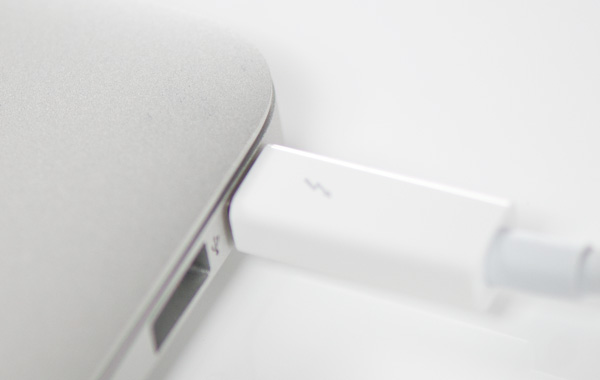
I believe the limitation here is actually on the cable side. A Thunderbolt cable can only transmit a Thunderbolt signal. Although DisplayPort is muxed in, if the display on the other end is expecting Thunderbolt and it receives DisplayPort it won't know what to do with it. It's possible Apple could have built in logic to autosense and switch between Thunderbolt and DisplayPort as inputs, but Apple traditionally employs clean breaks rather than long technology transitions. If Apple wants to ensure Thunderbolt gets adopted (at least by its users), this is the way to do it. As we learned from other legacy interfaces (e.g. PS/2, IDE), if you enable backwards compatibility you'll ensure the survival of systems that implement those interfaces. It's not so great for existing customers unfortunately.


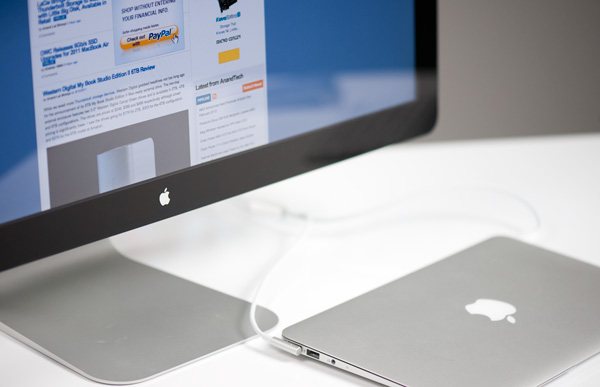
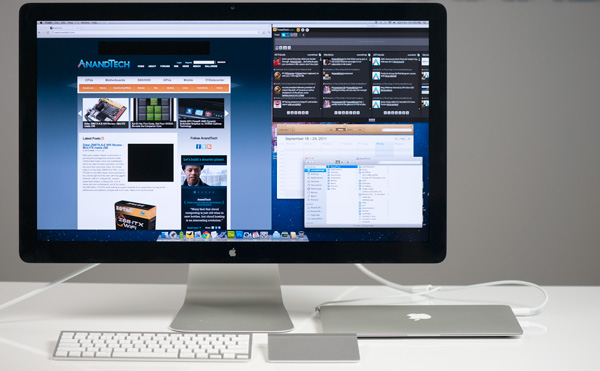
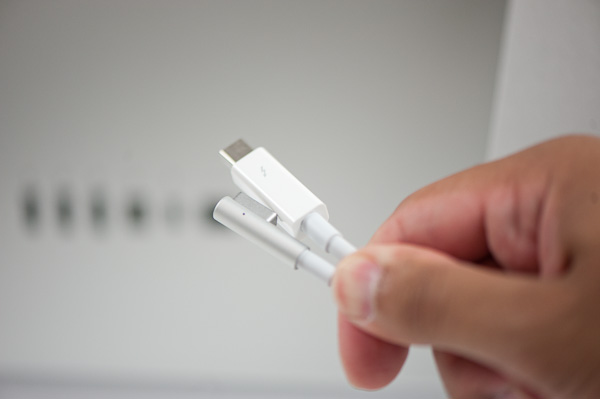








275 Comments
View All Comments
name99 - Friday, September 23, 2011 - link
"The iMac and displays like this compell people to discard those expensive displays far ahead of their time and likely buy another display of the same size and resolution."And discard means WHAT? I can go to eBay and see the prices for second hand macs. What's stopping you from selling your iMac, or giving it to a friend/family member/school?
You claim there area significant number of still-working flat-screen iMacs in closets or the trash. I call bullshit.
dave1_nyc - Friday, September 23, 2011 - link
Anand, I liked the review, and I think this sounds like interesting technology, but honestly, but you sound as though you've never used a docking station. Yes, you're right, they are all proprietary, but the good ones from Dell and Toshiba (and I'm sure others) are terrifically useful if one needs one.I don't, but there are people in my org for whom their laptops are their main machines and they take them back and forth between the office and home every day. All the modern docking stations provide pretty much any connectivity you could want, and they allow you to use any monitor you want, and switch out monitors.
Further, while connecting two cables (a la the review) isn't hard, with the laptops and docking stations we have you walk up and set the laptop down onto the station connectors. At which time the laptop (if thus setup) turns on, adjusts for the external display (or two), and that's that. If you have automatic login, you never have to open the laptop.
Expensive? We pay $150 for them, and with that comes the freedom to upgrade either the docking station (such as when the USB 3 ones come out early next year) or the monitor independently of each other.
Of course, the real docking stations (as opposed to those USB 2 things) are only found in 'business class' machines, but those machine can now be configured with discrete graphics if one wants.
I'm not trying to sell docking stations, but you're usually not quite so inaccurately dismissive.
jecs - Friday, September 23, 2011 - link
I agree with you. I think Apple or someone else should produce a docking station for Mac Books. I remember when I used those with an IBM laptop some years ago.If you want to use "an all Apple technology" the thunderbolt display is fine. But if you want a MBP and have a different need you will find yourself limited in options. But those parts need to be competitive in price and quality.
Constructor - Friday, September 23, 2011 - link
Why are you limited? Simply use a different Thunderbolt docking solution instead of the ready-made Thunderbolt Display.With Thunderbolt you can even customize your own special solution in a way you never could before, by daisy-chaining multiple Thunderbolt devices according to your own specific needs.
And the kicker is that you can carry it all over to a new machine, even when switching manufacturers and even platforms!
None of the pre-existing docking solutions ever came close to that.
Trefugl - Saturday, September 24, 2011 - link
But where are all these external devices that I can so easily purchase and make my own docking solution? Last I checked (admittedly a few weeks ago), there was a very limited selection on adapter types on the market.I do agree that this is a great solution (and one that actually makes me excited about thunderbolt), the problem is that no one has made an external hub like what's in the display yet... they might now that PCs are getting the same connector next year, but it just blows my mind that the first place you see this tech is stuffed inside a monitor (one that only can work at all with new '11 Macbooks...)
Constructor - Saturday, September 24, 2011 - link
Well, it works with all current Macs (the Mac Pro is the only one that hasn't been upgraded to Thunderbolt yet).And I would not be surprised if the availability of Intel Thunderbolt controllers was one of the reasons why third party devices are being delayed – at the number of Macs Apple is producing, it is quite possible they're buying every chip Intel manages to get out the door. But Intel has lots of experience with mass production of high-grade chips, so I have no doubt availability will catch up soon if it hasn't already.
Belkin is apparently designing effectively a Thunderbolt Display without the display:
http://gizmodo.com/5839952/belkins-thunderbolt-exp...">Belkin's Thunderbolt Express Dock Finally Gives You a Reason to Remember You Have Thunderbolt
And there's more in the pipeline from various manufacturers. Unsurprisingly, professional-grade interfaces which actually need the speed and low latency are among the first.
Constructor - Saturday, September 24, 2011 - link
The link has been crippled, apparently. This should work:http://gizmodo.com/5839952/belkins-thunderbolt-exp...
AbRASiON - Friday, September 23, 2011 - link
Defective by design.stepa - Friday, September 23, 2011 - link
Simple question (requires a simple answer)So does it mean that there is no way to connect this display to a windows pc as a main display?i know that with previous models you could use an adapter or newer gfx cards already have a display port.so this a no go for pc users?
KPOM - Friday, September 23, 2011 - link
Not until PCs with Thunderbolt ports start coming out next year. I suspect a lot of the Ultrabooks will do so since Thunderbolt support will be built into some of the Ivy Bridge chipsets.